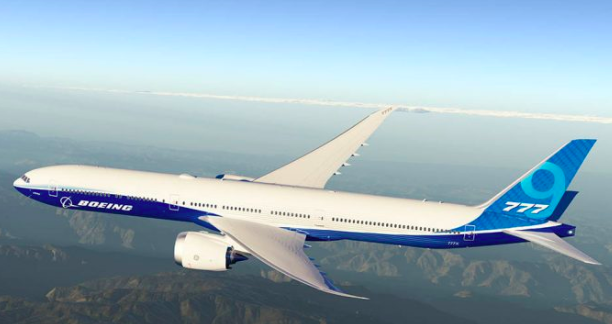Boeing’s New Plane Does What?!
January 30, 2020
Boeing recently launched its newest plane, the 777X, and it’s pretty innovative. They transitioned from aluminum to composite wings, construct the plane with slightly more width than the previous 777, and have more seating available. They also upgraded to General Electric 9X engines, which are slightly more efficient than the GE 90s. Big whoop. All of these improvements can be found on Boeing’s website. Despite not being particularly fascinating, these changes alone do justify a new model, yet there is still one particularly fascinating feature of the 777x. In the photo below, take a look at the “Wingspan” section.

Taken from a chart on Boeing’s Website: https://www.boeing.com/commercial/777x/
A plane with a varying wingspan is not something seen very often, especially on large body commercial airliners. As a matter of fact, it’s never been seen before on such. To explain the photo above, the 777X’s wings fold once the plane lands and decelerates. This allows the plane to be more narrow and able to fit in a wider variety of gates, hence supporting the ever-popular point-to-point flying model.
This feature stems from a pretty audacious move on Boeing’s end. For a company undergoing so much criticism, an innovative new type of wing on a new plane with new engines is pretty bold. The decision, however, could be more calculated than one may think. It took Boeing lots of time to get this plane approved by the FAA, for rightful reasons. Anything the company makes for the foreseeable future will be under heavy scrutiny. What Boeing has done, however, is using this scrutiny to their advantage. A plane so heavily investigated will undoubtedly gain public confidence, at least for people who believe in the FAA and their practices.
This folding wing feature is also indicative of the company’s own confidence in their products. Even after both 737 Max crashes, company employees said with a lack of consternation that they would put themselves and their family on a 737 Max without any doubt of safety. The truth is, the vast majority of Boeing employees probably value safety. Of course, if these employees were in the right position in the company during the design of the 737 Max, the two crashes would have been avoided, but that evidently was not the case.

